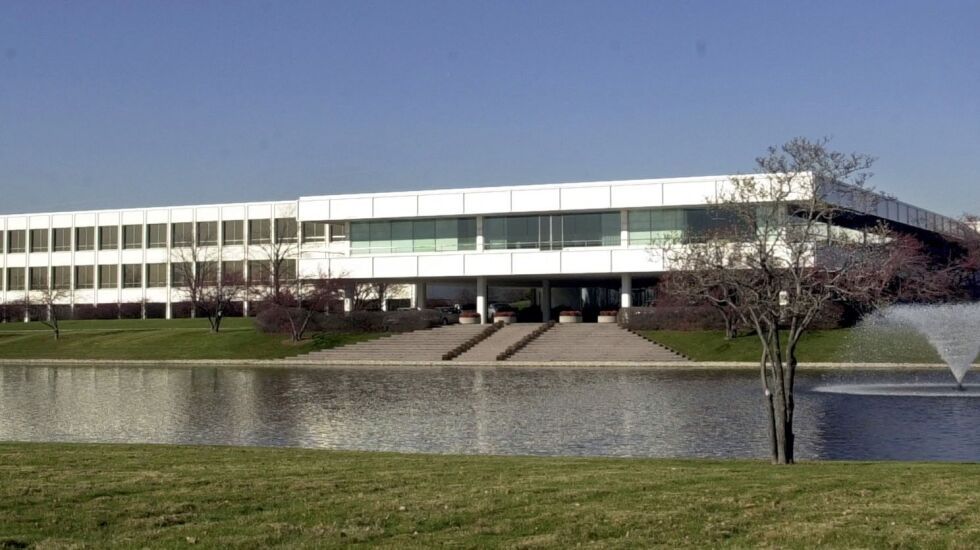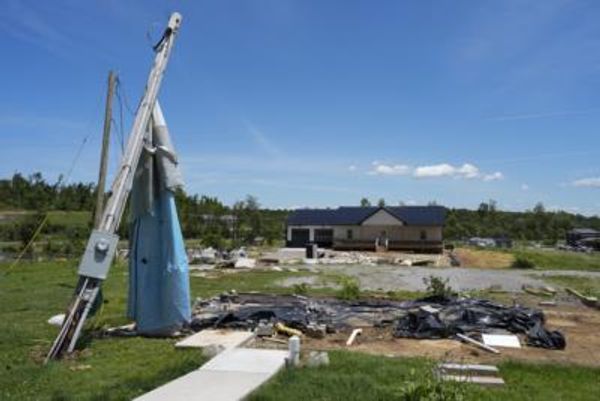
The architecturally significant Baxter International headquarters won’t succumb to the wrecker’s ball — not yet, at least — now that a developer has withdrawn plans seeking Deerfield village permission to redevelop the 101-acre site.
And that seems like good news to us. Bridge Industrial’s plan to replace the Baxter campus with warehouses and a logistics facility seemed to ruffle feathers all around.
Homeowners who would have lived close to the redeveloped site organized and fought the plan, citing concerns over the traffic, noise and fumes from at least 600 idling trucks per day that would come from the center.
A petition against the proposed center garnered more than 5,400 signatures last week. And last month, a village planning committee meeting on the proposal drew overflow crowds and protests.
“None of us knew that an industrial warehouse equaling 17 football fields would be built across the street from us, sharing the same stoplight that we use,” Barbara Raff, president of the Thorngate Homeowners Association, told WGN News.
And architectural preservationists on local and national levels spoke out against the planned loss of Baxter’s modernist headquarters complex.
Built in the 1970s, the campus was designed by Skidmore Owings & Merrill, with the firm’s Bruce Graham and structural engineer Fazlur Khan — the architectural titans responsible for the Sears Tower and John Hancock Center — leading the design.
“This decision provides an invaluable opportunity to discuss a more thoughtful approach to the redevelopment of the campus with the Village of Deerfield and Baxter International,” said architect Iker Gil, whose organization MAS Context raised the alarm about the campus’s apparent fate earlier this year.
Not just NIMBYism
Getting Bridge Industrial’s complex built involved a two-part public approval process.
The developer needed Deerfield to annex the Baxter campus — which sits in unincorporated Lake County — and then approve the company’s redevelopment plan for the site which sits north of Lake Cook Road between I-94/294.
In addition to the warehouses, the project would have had a recreational sports complex.
“We’re proposing to redevelop this land to a modern state-of-the-art, environmentally conscious Class A corporate campus for industrial tenants,” John Pozerycki, Chicago Market Officer for Bridge Industrial said last month.
The measure was scheduled to come before Deerfield’s planning committee last Thursday, but Deerfield officials announced Bridge pulled the plan from the agenda.
Meanwhile, it might be easy to dismiss the resistance to the facility solely as NIMBYism from the well-heeled Deerfield and Riverwoods residents.
But a national study released last month by the Environmental Defense Fund found the growing number of warehouse facilities — built to address the need to move goods faster in this day of online shopping — is a reason for concern.
According to the group’s study, people living near warehouse logistics facilities stand a greater chance of being exposed to harmful truck exhaust fumes, which potentially causes respiratory illnesses, low birth rates and even dementia.
This issue could be abated in Deerfield if the Baxter campus is reused rather than wrecked.
“We would encourage Deerfield to encourage a sustainable reuse of the [campus],” architect David Fleener, a board member of the modernist preservation group DOCOMOMO-Chicago, told the Sun-Times last month.
We agree.
And whether Bridge Industrial’s move last week is an abandonment of the project or the first step in a reset of the plan, the larger question surrounding warehouse logistics facilities remains.
There is work to do region-wide on where to locate industrial parks such as these. It’s a jobs-rich industry, and officials must figure out where they can be safely built and become an asset to a community — and where they can’t.
The Sun-Times welcomes letters to the editor and op-eds. Here’s our guidelines.







